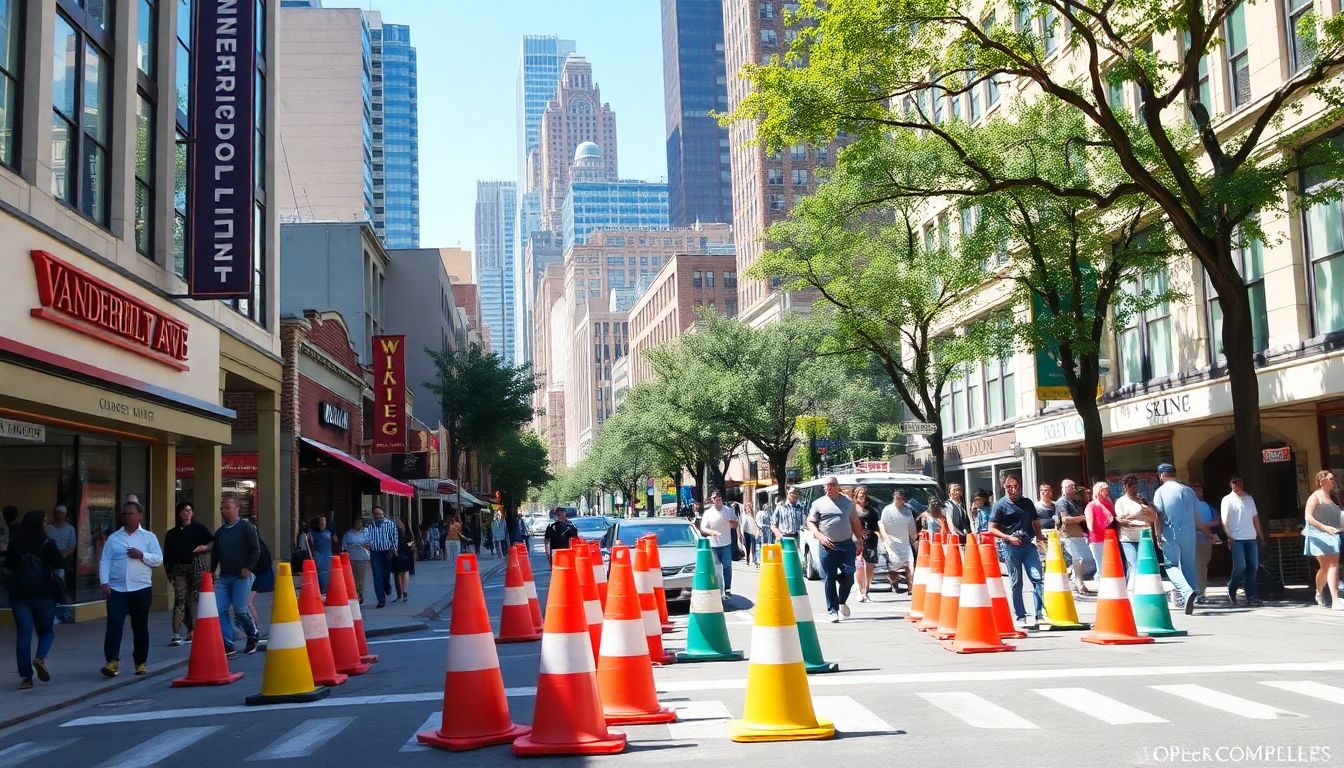Introduction
Cities are trying new ways to make streets more friendly for people. Open streets projects have become a big part of city plans. These streets help people walk, bike, and socialize outside more often. They can also cut down on traffic and pollution. But now, an unexpected problem is slowing down progress: not enough traffic cones. This shortage is causing delays in maintaining and expanding open streets like Vanderbilt Avenue. This article looks into what’s causing the cone shortage, how it affects everyone, and what can be done to fix it.
The Rise of Open Streets: A Citywide Movement
The Purpose and Benefits of Open Streets
Open streets make cities better places to live. They make it easier for folks to walk or ride bikes. Nearby businesses get more customers when streets are lively and open. Plus, these streets help cut traffic jams and make the air cleaner. That means healthier communities and safer neighborhoods. Most importantly, open streets bring people together and create a sense of community.
Examples of Open Streets Initiatives Nationwide and Locally
During the pandemic, New York City started opening more streets to foot traffic. Streets that were usually full of cars turned into safe zones for walking and outdoor dining. Vanderbilt Avenue in Brooklyn became one such busy open street. People loved the change. These programs show real benefits like more outdoor activities, lower traffic, and happier neighbors. Many cities now see open streets as a must-have for urban life.
Current Challenges Faced by Open Streets Programs
The Cone Shortage Crisis
Open streets need traffic cones to keep everyone safe. Cones mark off areas, guide vehicles, and prevent accidents. But now, there aren’t enough cones. Reports say many city programs are struggling to find enough safety equipment. This makes it harder to keep streets closed safely and plan new open street projects. Without enough cones, many street closures are being delayed or even canceled.
Causes of the Cone Shortage
Why are traffic cones so hard to find right now? There are a few reasons:
- Global manufacturing issues have slowed down supplies of plastic and rubber cones.
- The demand for temporary street closures shot up during the pandemic, increasing the need for cones.
- City budgets are tight, which delays procurement and restocking efforts.
- Supply chain disruptions make getting materials more difficult and expensive.
Consequences for Urban Mobility and Public Safety
When there aren’t enough cones, safety problems can jump up. Drivers or pedestrians may get confused or spill into unsafe zones. This raises the risk of accidents. It also causes delays in opening streets and expanding open street zones. Communities and businesses face uncertainty, and some worry the whole movement might slow down.
Broader Implications of Material Shortages in Urban Infrastructure
Impact on City Planning and Public Policy
Material shortages like these hit city planning hard. Open streets are part of broader efforts to improve urban life. When supplies run out, cities have to choose which projects to go ahead with and which to pause. This creates tough decisions and sometimes less progress than expected. It also makes maintaining current open streets more difficult.
Lessons Learned from the Supply Chain Disruptions
The cone shortage shows us how important reliable supply chains are for cities. If cities can’t get key materials, their plans are thrown off. Experts recommend building local stockpiles and creating buffers for such emergencies. This will help cities bounce back faster and keep open streets available to all.
Potential Long-term Effects
Delays caused by shortages can slow down urban renewal projects. They might frustrate residents and business owners. Public trust can suffer if projects stall or disappear. Cities may need to change their policies, focusing more on self-sustaining and reusable safety tools. That way, open streets can survive future shocks better.
Expert Insights and Stakeholder Perspectives
City Officials and Urban Planners
Officials admit that cone shortages are a real problem. Some have said they’re exploring new safety solutions and alternatives. They’re also trying to prioritize the most critical street closures first. Overall, leaders emphasize the need to think long-term and build resilient plans.
Community and Business Leaders
Local businesses count on open streets for extra foot traffic and sales. During shortages, some worry about lost revenue. Community voices have called for clearer communication from city agencies. Many appreciate the efforts but want more stability and quicker fixes.
Suppliers and Manufacturers
Vendors explain that supply chains are stretched thin due to global issues. They’re working to boost production but face delays. Many say they’re optimistic about future improvements. Some are developing new, sustainable safety products to reduce dependence on traditional cones.
Actionable Solutions and Recommendations
Short-term Mitigation Strategies
Cities can use alternative materials like signage or barriers temporarily. Reusable cones and safety devices are another option. Prioritizing critical projects ensures safety keeps pace with needs. Flexibility helps keep open streets operational even with limited cones.
Long-term Resilience Planning
Building local manufacturing capacity could be a game-changer. Creating stockpiles of safety equipment can also prevent future shortages. Investing in eco-friendly, durable safety solutions could lower costs and waste over time.
Policy and Community Engagement
Increasing funding for open streets projects allows cities to buy more safety gear. Communities can participate in safety campaigns, spreading awareness about sharing resources wisely. Public feedback can drive smarter policymaking, ensuring everyone’s needs are met.
Conclusion
Open streets are vital to making cities more vibrant and safe. Yet, the current cone shortage is a big hurdle. It affects plans, safety, and public trust in these programs. To keep open streets thriving, neighborhoods, officials, and supply chains must work together. Building smarter, more resilient systems today will secure the lively streets of tomorrow. Let’s push for swift action and thoughtful planning to turn this crisis into an opportunity for stronger urban spaces.
